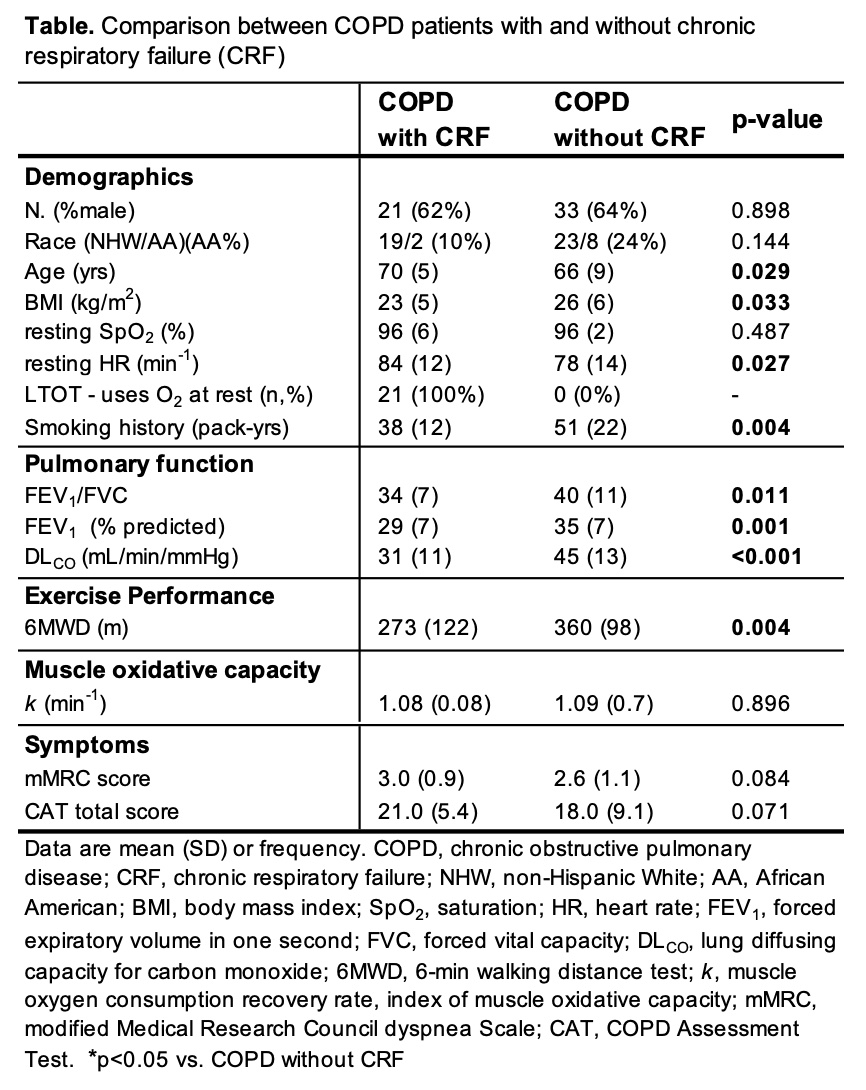Abstract
Introduction Chronic hypoxemia has been proposed as mediator of sarcopenia and loss of muscle oxidative capacity in chronic obstructive pulmonary disease (COPD) patients. Long-term oxygen therapy (LTOT) is an established treatment for COPD patients with chronic respiratory failure (CRF).
Aim To determine whether COPD patients with LTOT-treated CRF have impaired muscle oxidative capacity compared to those without CRF.
Methods Pulmonary function, smoking history (pack-years), LTOT, 6MWD, mMRC and CAT were measured. Calf muscle oxidative capacity was assessed from the O2 consumption recovery rate constant (k) using near-infrared spectroscopy. Chi2 and t tests assessed group differences. Comparison of k was adjusted for known covariates (FEV1%pred, age) using ANCOVA.
Results 21 COPD with CRF and 33 without CRF were included (Table). Those with CRF were older (p=0.034), had worse pulmonary function (p<0.011) and exercise performance (6MWD, p=0.004), but similar symptoms (p>0.071) to COPD without CRF. After adjusting for covariates, k was not different between groups (p=0.896).
Conclusions Muscle oxidative capacity was not different between COPD patients with and without CRF. Because CRF patients were older and had lower FEV1%pred (known covariates of k), this finding suggests that LTOT may be protective against loss of muscle oxidative function in COPD.
Funding R01HL151452; 5×1000 Italian Ministry of Health
